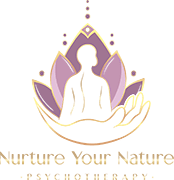In a fast-paced city like Brooklyn, stress and anxiety often seem like part of everyday life. From constant notifications to never-ending work demands, our minds rarely get a break. For many, anxiety can spiral into racing thoughts, shallow breathing, and feelings of disconnection. Fortunately, simple mindfulness tools—like the 3-3-3 rule for anxiety—can make a profound difference.
At Nurture Your Nature Psychotherapy, we help individuals across Brooklyn rediscover balance and self-awareness through approachable, evidence-based strategies. The 3-3-3 rule is one of our favorite techniques for helping clients regain control during moments of overwhelm. In this article, we’ll explore what the 3-3-3 rule is, why it works, and how to apply it effectively—along with how professional Brooklyn therapy can support long-term mental well-being.
Understanding Anxiety in Everyday Life
Anxiety is a normal human emotion—our body’s natural response to stress or perceived danger. But when it becomes chronic, it can interfere with sleep, focus, and relationships. Many people in Brooklyn experience anxiety triggered by work pressure, relationship conflicts, financial strain, or social isolation.
Some common symptoms include:
-
Restlessness or irritability
-
Muscle tension
-
Racing thoughts
-
Difficulty concentrating
-
Rapid heart rate
-
Sleep disturbances
While therapy provides long-term strategies to manage anxiety, grounding techniques like the 3-3-3 rule offer instant relief in stressful moments. It’s a quick, practical way to help your brain shift from anxiety mode to mindfulness mode.
What Is the 3-3-3 Rule for Anxiety?
The 3-3-3 rule is a grounding technique rooted in mindfulness and sensory awareness. It’s designed to calm your nervous system by engaging your senses and focusing your attention on the present moment.
Here’s how it works:
-
Look around and name 3 things you see.
This draws your awareness away from internal worry and toward your physical surroundings. -
Identify 3 things you can hear.
Notice external sounds—traffic, footsteps, birds, or even the hum of your computer. This helps reorient your focus externally. -
Move 3 parts of your body.
Wiggle your toes, rotate your shoulders, or stretch your fingers. Physical movement signals safety to your brain and reduces tension.
This simple three-step process helps your mind pause the anxious thought cycle. Within a minute, you’re back in your body, connected to your environment, and more capable of thinking clearly.
Why the 3-3-3 Rule Works: The Science Behind Grounding
When anxiety strikes, your body’s fight-or-flight response activates. Your brain releases stress hormones like cortisol and adrenaline, which increase your heart rate and sharpen your focus for danger. But when no real danger exists, these physical sensations can feel overwhelming.
The 3-3-3 rule interrupts this physiological loop. By engaging the senses, you stimulate the parasympathetic nervous system—the body’s natural “calm down” mechanism. It shifts you out of panic and into a grounded state.
Grounding Reconnects You to the Present
Anxiety often thrives on what-ifs: what if I fail, what if I embarrass myself, what if I can’t handle it? The 3-3-3 rule brings you back to the present, where your senses prove you’re safe right now.
Movement Reduces Physical Tension
By physically moving, you remind your brain that there’s no threat requiring stillness or fear. Gentle motion releases muscular tension and promotes relaxation.
Awareness Rebuilds Control
When you focus on what you see, hear, and feel, you stop spiraling into anxious predictions. It’s a micro-reset for your nervous system—a moment of control when everything feels chaotic.
How to Practice the 3-3-3 Rule Step-by-Step
Let’s break down how to make the 3-3-3 rule a habit that truly works for you.
Step 1: Pause and Breathe
When you notice anxiety building, stop what you’re doing. Take a slow breath in through your nose for four seconds, hold for two, and exhale slowly.
Step 2: Name 3 Things You See
Look around your environment. Choose three things—big or small—and say them out loud or in your mind. Example: “I see my laptop, a green plant, and a coffee cup.”
Step 3: Name 3 Things You Hear
Tune into ambient sounds. “I hear cars outside, my neighbor’s footsteps, and the hum of the refrigerator.”
Step 4: Move 3 Parts of Your Body
You could roll your shoulders, stretch your arms, and tap your feet. Movement grounds you physically in the moment.
Repeat this sequence as often as you need. Over time, it becomes a natural reflex—your go-to anchor during stressful moments.
The 3-3-3 Rule in Real-Life Scenarios
Grounding exercises are most powerful when used consistently. Here’s how you might apply the 3-3-3 rule throughout your day:
During a Commute
Feeling tense on a crowded subway? Look at the ads above the seats, notice three different sounds, and move your fingers discreetly.
At Work
Before a big meeting, pause at your desk. Identify three colors in the room, three sounds, and rotate your neck gently.
At Night
Can’t sleep because your mind won’t stop racing? In your bedroom, look around at three familiar objects, listen for quiet background noises, and stretch your toes.
During Online Therapy Sessions
If emotions arise while talking to your Brooklyn therapist, your clinician might guide you through the 3-3-3 rule in real time. It helps center your emotions and focus during sessions, especially for clients receiving online therapy in Brooklyn.
Complementing the 3-3-3 Rule with Professional Therapy
While grounding exercises like the 3-3-3 rule offer instant relief, they’re most effective when combined with professional support. At Nurture Your Nature Psychotherapy, our licensed Brooklyn therapists use a blend of evidence-based modalities—such as Cognitive Behavioral Therapy (CBT), Mindfulness-Based Stress Reduction (MBSR), and Acceptance and Commitment Therapy (ACT)—to help clients manage anxiety long-term.
Cognitive Behavioral Therapy (CBT)
CBT helps identify and challenge unhelpful thought patterns that fuel anxiety. When combined with grounding, you learn both immediate coping tools and deeper cognitive restructuring.
Mindfulness-Based Therapy
Mindfulness enhances awareness and acceptance of present experiences. The 3-3-3 rule naturally aligns with mindfulness principles, helping you observe anxiety without judgment.
Online Therapy in Brooklyn
If commuting adds stress to your schedule, online therapy offers flexibility and comfort from home. Sessions are secure, confidential, and just as effective as in-person meetings.
The Role of Environment in Managing Anxiety
Living in Brooklyn means constant sensory input—sirens, traffic, people, and screens. This overstimulation can heighten anxiety responses. Creating a supportive environment helps reduce triggers.
Create a Calming Space
Incorporate natural elements—plants, sunlight, or calming scents like lavender—to soothe your senses.
Reduce Digital Overload
Set phone boundaries. Silence notifications during meals or before bedtime.
Practice Consistency
Use the 3-3-3 rule daily, even when you’re not anxious. Regular grounding keeps your mind conditioned for calm.
At Nurture Your Nature Psychotherapy, we encourage clients to develop home environments that promote relaxation and mindfulness, complementing their therapy journey.
How the Brain Responds to Grounding Techniques
Neuroscience supports the use of sensory-based grounding techniques like the 3-3-3 rule. Here’s what happens in your brain:
-
Amygdala: The brain’s alarm system. The 3-3-3 rule reduces overactivity here, lowering fear responses.
-
Prefrontal Cortex: Responsible for rational thinking. When anxiety calms, this region reactivates, improving decision-making.
-
Insula: Governs body awareness. Grounding strengthens interoceptive accuracy—your ability to sense and regulate internal states.
In essence, the 3-3-3 rule retrains your brain to return to equilibrium faster after stress.
The Connection Between Body and Mind
Anxiety isn’t just mental—it’s deeply physical. Grounding through movement connects both systems. Research shows that simple actions like stretching or hand movements release endorphins and decrease cortisol.
When paired with breathing exercises or Brooklyn psychotherapy, you strengthen your mind-body connection. This synergy helps you recognize anxiety cues early and apply tools before they escalate.
Overcoming Challenges with the 3-3-3 Rule
Some people struggle with grounding initially, especially when anxiety feels overpowering. Here’s how to make it easier:
Start Small
Try it in calm moments before using it during panic. This builds familiarity.
Pair It with Deep Breathing
Breathing deeply enhances the calming effect by activating the vagus nerve.
Add Visualization
Imagine roots growing from your feet into the ground while doing the exercise—this reinforces stability.
With guidance from a Brooklyn therapist, you can personalize grounding techniques that fit your unique sensory preferences.
Integrating the 3-3-3 Rule into Therapy Sessions
At Nurture Your Nature Psychotherapy, we often integrate grounding into sessions, both in person and through online therapy in Brooklyn. Clients are encouraged to use the 3-3-3 rule when discussing stressful topics or processing trauma.
It helps:
-
Decrease emotional flooding
-
Restore focus during difficult memories
-
Strengthen self-regulation skills
Over time, clients learn to apply it automatically in daily life—at work, during conflict, or before sleep.
When to Seek Professional Help
If anxiety interferes with your daily life, self-help tools might not be enough. Signs you may benefit from therapy include:
-
Constant worry or panic attacks
-
Avoiding social or work situations
-
Difficulty relaxing even in safe environments
-
Sleep problems or physical symptoms of stress
Working with a licensed Brooklyn therapist provides a safe, structured environment to unpack root causes and develop personalized coping strategies.
Nurture Your Nature Psychotherapy: Supporting Your Healing Journey
At Nurture Your Nature Psychotherapy, our mission is to help you reconnect with your inner calm and natural resilience. We believe that anxiety doesn’t define you—it’s simply a message from your nervous system asking for care.
Whether you’re exploring therapy for the first time or looking for ongoing support, we offer:
-
Individual psychotherapy
-
Anxiety and stress management sessions
-
Mindfulness and grounding practices
-
Flexible online therapy in Brooklyn options
Our clinicians provide compassionate, nonjudgmental care rooted in mindfulness and evidence-based treatment.
Daily Practices to Enhance the 3-3-3 Rule
To reinforce your grounding habit, try integrating these daily rituals:
-
Morning Check-In: Before checking your phone, notice 3 things around you.
-
Midday Pause: During lunch, take one minute to observe sounds and sensations.
-
Evening Reflection: Before bed, identify 3 things you’re grateful for—this reorients your mind toward calmness.
These small moments of awareness cultivate long-term emotional stability.
The Long-Term Benefits of Grounding Practices
Practicing the 3-3-3 rule consistently has far-reaching benefits:
-
Reduced anxiety intensity and frequency
-
Improved concentration and sleep
-
Better emotional regulation
-
Enhanced confidence during stress
-
Stronger mindfulness habits
When combined with regular Brooklyn therapy sessions, these benefits deepen—transforming temporary relief into lasting mental health improvement.
Final Thoughts: Calm Is a Skill You Can Relearn
Anxiety can make you feel powerless, but tools like the 3-3-3 rule remind you that calm is within reach. It’s not about eliminating anxious thoughts—it’s about reclaiming your focus, breath, and connection to the present.
At Nurture Your Nature Psychotherapy, we help clients across Brooklyn and beyond rediscover peace through compassion, mindfulness, and evidence-based care. Whether you prefer in-person sessions or online therapy, our Brooklyn therapists are here to guide you toward a calmer, more centered life.
At Nurture Your Nature Psychotherapy, we believe every individual holds the capacity to rewrite their conflict dialogue, thereby nurturing healthier relationships and a more peaceful inner life. If you are ready to change the conversation, we are ready to help you find the words. Ready to take the first step? Reach out today and Schedule your Appointment Online Now or Call Us at (646) 470-4174 to get started Today!














